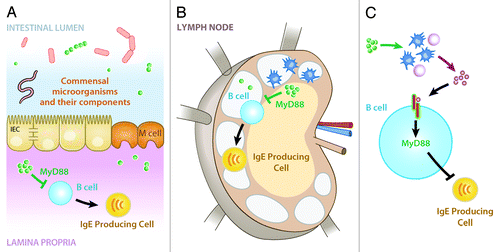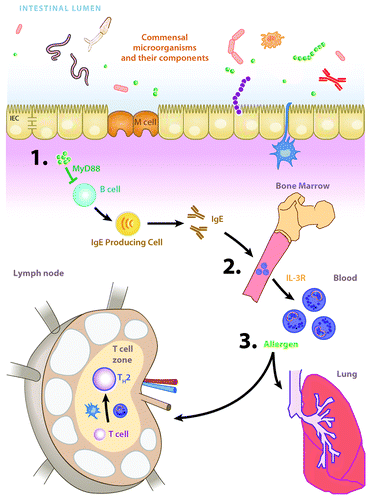Figures & data
Figure 1. Potential mechanisms by which commensal-derived signals may act in a B cell-intrinsic, MyD88-dependent manner to influence IgE production. (A) Commensal-derived signals (green spheres) may act in a MyD88-dependent manner on B cells in the lamina propria or other intestinal-associated tissues to limit production of IgE. (B) Alternatively, commensal bacteria or their signals may be transported to mesenteric lymph nodes where they could act in a MyD88-dependent manner on B cells to limit production of IgE. (C) Finally, commensal-derived signals may act via one or more intermediate cell types or signaling molecules to influence B cell production of IgE in a MyD88-dependent manner. Figure adapted from reference Citation10.

Figure 2. The commensal bacteria-IgE-basophil axis of allergic inflammation. (A) Commensal bacteria-derived signals (green spheres) act via B cell-intrinsic, MyD88-dependent signaling pathways to limit circulating levels of IgE. (B) IgE acts on bone marrow-resident basophil precursor populations to increase surface expression of the IL-3 receptor and development of mature circulating basophils. © Upon allergen exposure, basophils are recruited to draining lymph nodes where they potentiate the development of TH2 cell responses and TH2 cytokine-dependent allergic inflammation. Figure adapted from reference Citation10.
